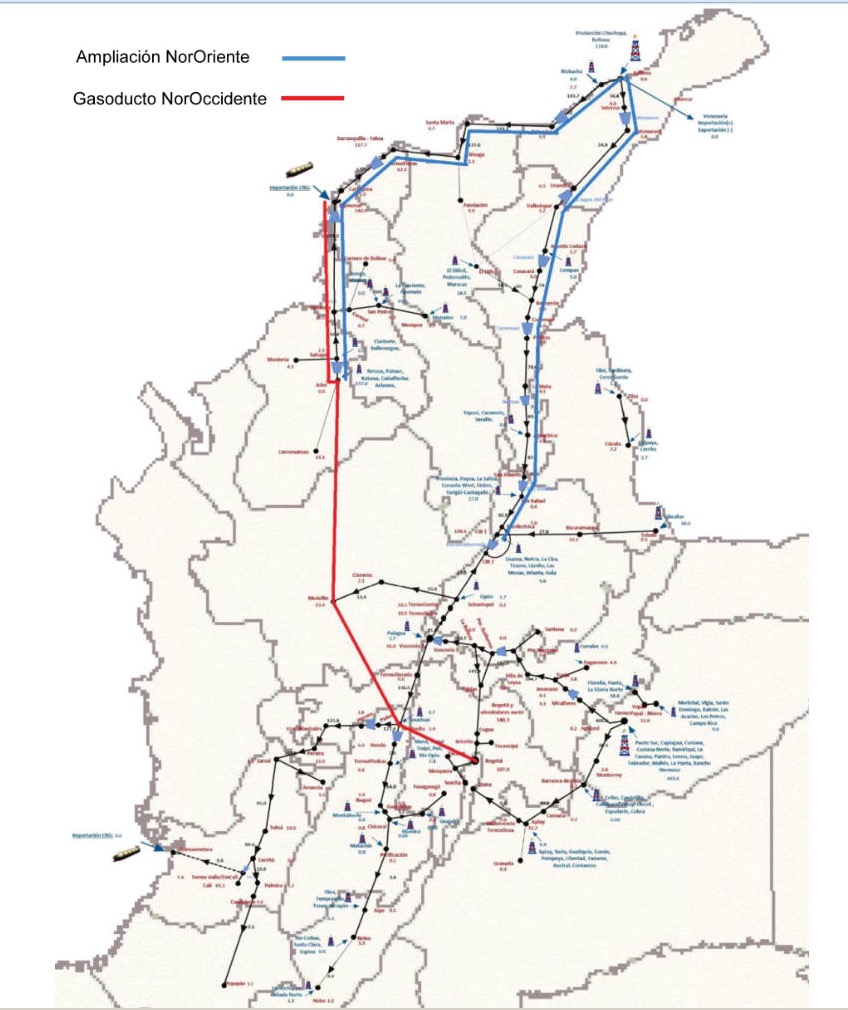December 2017, Vol. 244, No. 12
Features
New Gas Pipeline Projects Underway in Colombia

A technical study by the Mining and Energy Planning Unit (UPME) estimates the demand for natural gas throughout Colombia in the medium term will reach an average growth of 2.2% between 2015 and 2035, from 1,060 Giga Btu daily (GBtu/d) to 1,707 GBtu/d, driven by continued economic growth, steady population increases and the replacement of a number of less-efficient fossil fuels by natural gas.
The growth in each region of this critically situated South America republic is determined by the physical characteristics and the specific economic activities that govern them. As a result, the coastal region still maintains the largest participation, followed by the northwest and central regions of the country.
After 2020, demand in the northeast region is likely to increase significantly following the expansion of the Barrancabermeja refinery and the rapid development of oil extraction. However, the most critical scenario between supply and demand will not be reached until 2024.
In the past, there have been supply problems due to serious natural gas infrastructure limitations throughout Colombia. This has negatively affected the ability of the energy industry to meet demand, especially in different regions and businesses that were requesting more natural gas. On the other hand, the declining fields of the La Guajira and Llanos Orientales, combined with low incorporation of gas reserves, has forced Colombia to import LNG.
Most of the nation’s demand for natural gas is generated by large cities such as Barranquilla and Cartagena. Apart from consuming huge quantities of natural gas for electric power generation, the industrial and residential/commercial gas markets have also shown considerable growth with much more to follow.
This led the Ministry of Energy of Colombia to plan for construction of the following projects:
The Jobo-Cartagena Gas Pipeline is the focus of expansion in the Lower Magdalena Valley to Cartagena. Developers are doubling the transport capacity of the Jobo-Sincelejo section to 120 MMcf/d by constructing a 15-inch loop. In addition, they are building another 15-inch loop in the Sincelejo-Filadelfia segment. This will increase the transport capacity to 200 MMcf/d. Both projects will be in-service by the end of 2018.
In the next few years, part of the demand of Barranquilla will be supplied from Cartagena, with imported natural gas or from fields in the Lower Magdalena Valley. This will require the availability of transport capacity in the Cartagena-Barranquilla of 350 MMcf/d.
By 2026 it will likely be necessary to increase the transport capacity of this section with a 72-mile (115-km), 30-inch loop between the towns of Paiva and Barranquilla. And by 2028, the construction of a third 30-inch loop between Cartagena and Barranquilla will probably be required with transportation capacity increased above 600 MMcf/d.
For 2020, planners are working on a change in direction of natural gas flow between Barranquilla and Ballena that will require additional capacity from Ballena to the region of Barrancabermeja. Expansion of the Paiva-Barranquilla pipeline will be completed in 2026 and will provide a capacity of over 400 MMcf/d between Barraquilla and Ballena. The most significant portion of the gas pipeline will be a 12-km, 30-inch segment between Buenaventura and Yumbo, with a capacity of 550 MMcf/d.
Because the pipeline’s limited capacity (72 MMcf/d) cannot meet today’s high demand for natural gas, the pressure at Sebastopol – from where the city Medellin is supplied – is also at the limit of its capacity. This will mean that over next few months, the installation of a compression station at Sebastopol will be approved, thus increasing the entrance pressure to the pipeline to above 1,000 psig, and allowing the transportation of over 80 MMcf/d of natural gas.





Comments